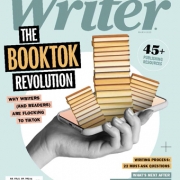Retelling Your Marketing Story
Of course they’ve heard it before, and reusing ideas is certainly nothing new, Toni Fitzgerald explains in the Writer magazine. “From Biblical stories to Homer’s Odyssey, conceptsget adopted and tweaked for the audience.” And just why do writers retell stories?
- to honor a work that made a big impact on them
- to amplify an important message
- to explore a theme from a new direction
- to add diversity and additional context
- to force readers to rethink things they may have taken for granted
“Stop us if you’ve heard this one,” Fitzgerald tells readers: Headstrong young woman bucks the expectations of society and of her family. She meets a young man who seems immune to her charms, falls in love with him, learning that things are not always what they seem and that being vulnerable is the only way to move forward… Sure, that’s the story of classic novel Pride and Prejudice, but that plot also fits Bridget Jones’ Diary. The big advantage of recasting a novel is that, since people are already familiar with the story, you spend less time setting up the plot, earning automatic “buy-in” from the readers.
Storytelling is a strong business skill, SCORE explains, with the power to boost business in a number of ways, creating product awareness, improving customer loyalty, and increasing profit. Business stories today, the authors add, are created around eight topics:
- Who we are
- Why us
- Our vision
- Good business
- What we have learned
- How we design it
- How we do it
- Meet our customers
“Transferring values and beliefs is done through your story’s character having an epiphany because your audience will also experience this,” the SCORE authors explain As Fitzgerald sees it, “We all want to be the heroes of the story.” But, because different segments of your audience will experience your story in different ways, audiences must be attracted with different “digital honeypots”, on24.com explains. To create a compelling story, you need to understand your readers and who will respond and take action, defining your “buyer persona(s)”, Hubspot advises.
“As marketing strategists, we stress the importance of repetition. Retelling your story – through traditional and digital media, advertising and face-to-face sales – is the only way to ensure your value points are heard, understood and remembered,” says Robin Miller of publicity.com. “If you’re going to be in the marketing or advertising business, if you’re going to be in sales, you’ve got to tell your story over and over, and over and over, and over and over again. Then you’ve got to tell it one more time,” he advises.
Of course they’ve heard it before, we explain to our Say It For You clients. The very secret of success lies in the retelling of your marketing story!






Follow us online!